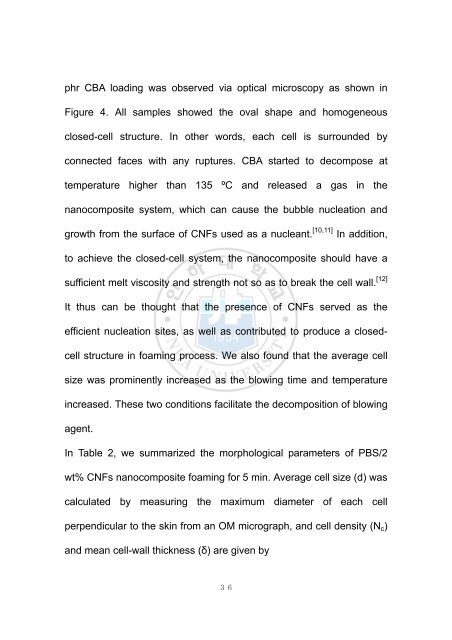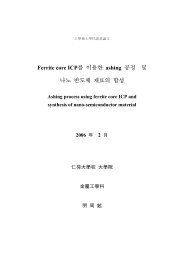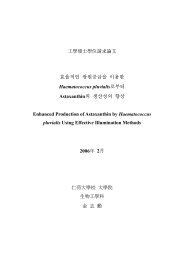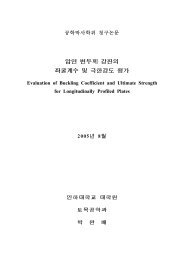저작자표시-비영리-변경금지 2.0 대한민국 이용자는 아래의 조건을 ...
저작자표시-비영리-변경금지 2.0 대한민국 이용자는 아래의 조건을 ...
저작자표시-비영리-변경금지 2.0 대한민국 이용자는 아래의 조건을 ...
Create successful ePaper yourself
Turn your PDF publications into a flip-book with our unique Google optimized e-Paper software.
phr CBA loading was observed via optical microscopy as shown in<br />
Figure 4. All samples showed the oval shape and homogeneous<br />
closed-cell structure. In other words, each cell is surrounded by<br />
connected faces with any ruptures. CBA started to decompose at<br />
temperature higher than 135 ºC and released a gas in the<br />
nanocomposite system, which can cause the bubble nucleation and<br />
growth from the surface of CNFs used as a nucleant. [10,11] In addition,<br />
to achieve the closed-cell system, the nanocomposite should have a<br />
sufficient melt viscosity and strength not so as to break the cell wall. [12]<br />
It thus can be thought that the presence of CNFs served as the<br />
efficient nucleation sites, as well as contributed to produce a closed-<br />
cell structure in foaming process. We also found that the average cell<br />
size was prominently increased as the blowing time and temperature<br />
increased. These two conditions facilitate the decomposition of blowing<br />
agent.<br />
In Table 2, we summarized the morphological parameters of PBS/2<br />
wt% CNFs nanocomposite foaming for 5 min. Average cell size (d) was<br />
calculated by measuring the maximum diameter of each cell<br />
perpendicular to the skin from an OM micrograph, and cell density (Nc)<br />
and mean cell-wall thickness (δ) are given by<br />
36







